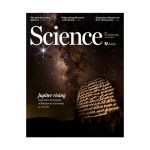Intrinsic Human Immunodeficiency Virus Type 1 Resistance of Hematopoietic Stem Cells Despite Coreceptor Expression
Hongmei Shen, Tao Cheng, Frederick I. Preffer, David Dombkowski,Michael H. Tomasson, David E. Golan, Otto Yang, Wolfgang Hofmann, Joseph G. Sodroski, Andrew D. Luster, and David T. Scadden
Abstract
Interactions of human immunodeficiency virus type 1 (HIV-1) with hematopoietic stem cells may define restrictions on immune reconstitution following effective antiretroviral therapy and affect stem cell gene therapy strategies for AIDS. In the present study, we demonstrated mRNA and cell surface expression of HIV-1 receptors CD4 and the chemokine receptors CCR-5 and CXCR-4 in fractionated cells representing multiple stages of hematopoietic development. Chemokine receptor function was documented in subsets of cells by calcium flux in response to a cognate ligand. Productive infection by HIV-1 via these receptors was observed with the notable exception of stem cells, in which case the presence of CD4, CXCR-4, and CCR-5, as documented by single-cell analysis for expression and function, was insufficient for infection. Neither productive infection, transgene expression, nor virus entry was detectable following exposure of stem cells to either wild-type HIV-1 or lentivirus constructs pseudotyped in HIV-1 envelopes of macrophage-tropic, T-cell-tropic, or dualtropic specificity. Successful entry into stem cells of a vesicular stomatitis virus G protein-pseudotyped HIV-1 construct demonstrated that the resistance to HIV-1 was mediated at the level of virus-cell membrane fusion and entry. These data define the hematopoietic stem cell as a sanctuary cell which is resistant to HIV-1 infection by a mechanism independent of receptor and coreceptor expression that suggests a novel means of cellular protection from HIV-1.





